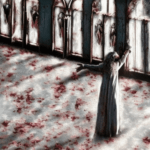One-line Summary:
In “The Merchant’s Daughter,” a young woman named Annabel finds herself forced into servitude to pay off her family’s debts, but as she works alongside the brooding and scarred Lord Ranulf, she discovers that love and redemption can be found in unexpected places.
The Life of Servitude
“The Merchant’s Daughter” is a historical romance novel written by Melanie Dickerson. Set in medieval England, the story follows Annabel, the daughter of a once-wealthy merchant who has fallen on hard times. After her father’s death, Annabel’s family is left with a mountain of debt, and she is forced to become an indentured servant to Lord Ranulf le Wyse to pay off what they owe.
As Annabel enters a life of servitude, she finds herself working alongside other servants in Lord Ranulf’s manor. Despite the difficult circumstances, Annabel remains resilient and determined to fulfill her obligations. However, she soon discovers that Lord Ranulf is not the cruel and heartless man she initially believed him to be. Instead, he is a brooding and scarred individual who carries his own burdens and secrets.
A Slow-Burning Romance
As Annabel and Lord Ranulf spend more time together, their initial animosity begins to transform into something deeper. The two characters find solace in each other’s company, sharing their fears, dreams, and vulnerabilities. Their relationship develops gradually, with moments of tension and tenderness that keep readers eagerly turning the pages.
Amidst their growing connection, Annabel and Lord Ranulf must navigate the challenges of their respective positions. Annabel’s status as a servant and Lord Ranulf’s responsibilities as a nobleman create a divide between them, making their love seem impossible. However, their shared experiences and genuine affection for one another give them hope for a future together.
A Journey of Redemption
“The Merchant’s Daughter” explores themes of redemption and forgiveness. Both Annabel and Lord Ranulf carry emotional scars from their pasts, and their journey together becomes a catalyst for healing. As they learn to let go of their pain and embrace love, they discover the power of forgiveness and the possibility of a brighter future.
Throughout the story, the author delves into the complexities of human nature, portraying flawed characters who find redemption through their actions and choices. Annabel’s determination to honor her commitments and Lord Ranulf’s willingness to confront his past mistakes highlight the transformative power of love and forgiveness.
Key Takeaways:
- Love and redemption can be found in unexpected places.
- True beauty lies within, beyond external appearances.
- Forgiveness has the power to heal and transform.
- Resilience and determination can overcome adversity.
“Love is not a feeling. It is an act of the will.” – Melanie Dickerson
In “The Merchant’s Daughter,” Melanie Dickerson weaves a captivating tale of love, redemption, and forgiveness set against the backdrop of medieval England. Through Annabel and Lord Ranulf’s journey, readers are reminded that true beauty lies within, and that love has the power to heal even the deepest wounds. As the characters navigate their way through a life of servitude and societal expectations, they discover that love is not merely a feeling but an act of the will. Ultimately, “The Merchant’s Daughter” serves as a reminder that redemption and forgiveness can be found in unexpected places, and that resilience and determination can overcome even the most challenging circumstances.












